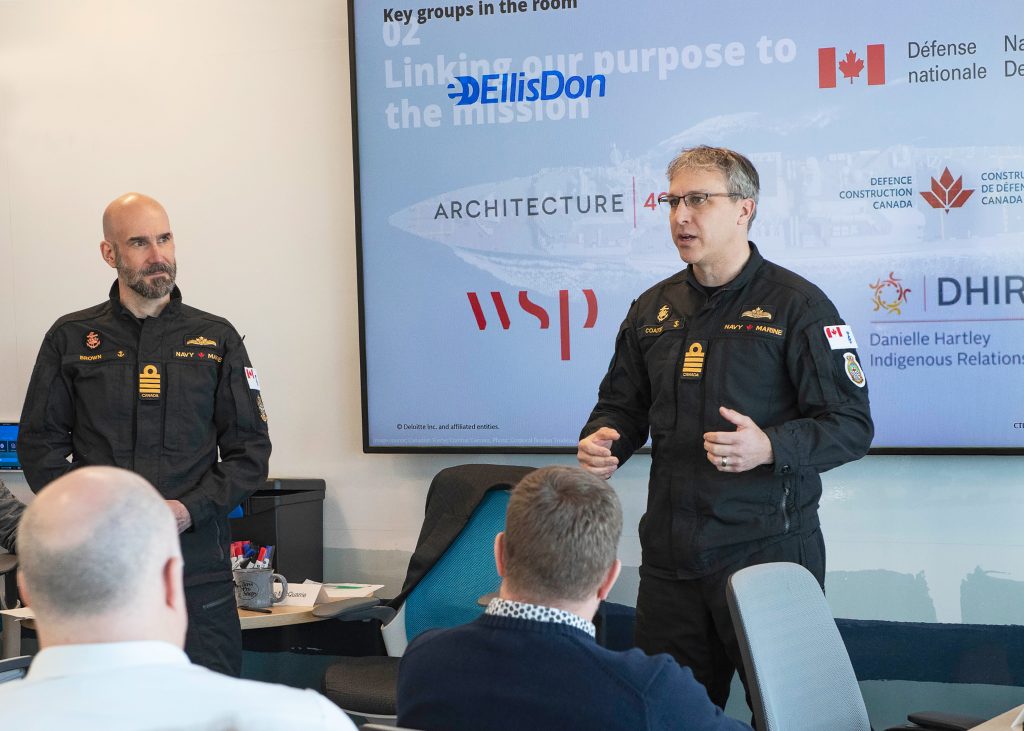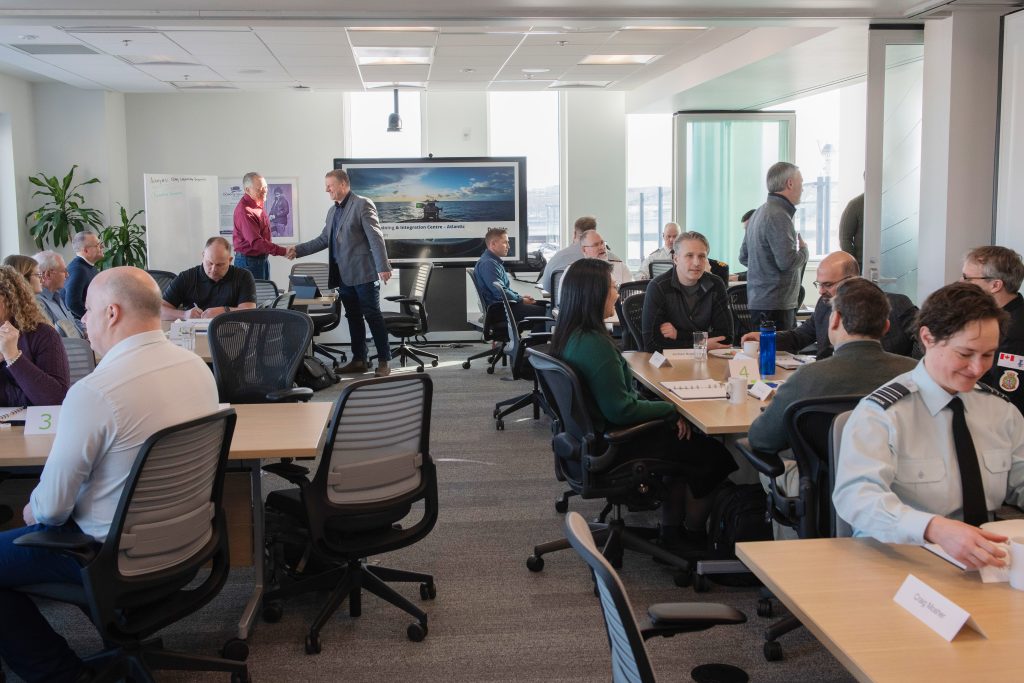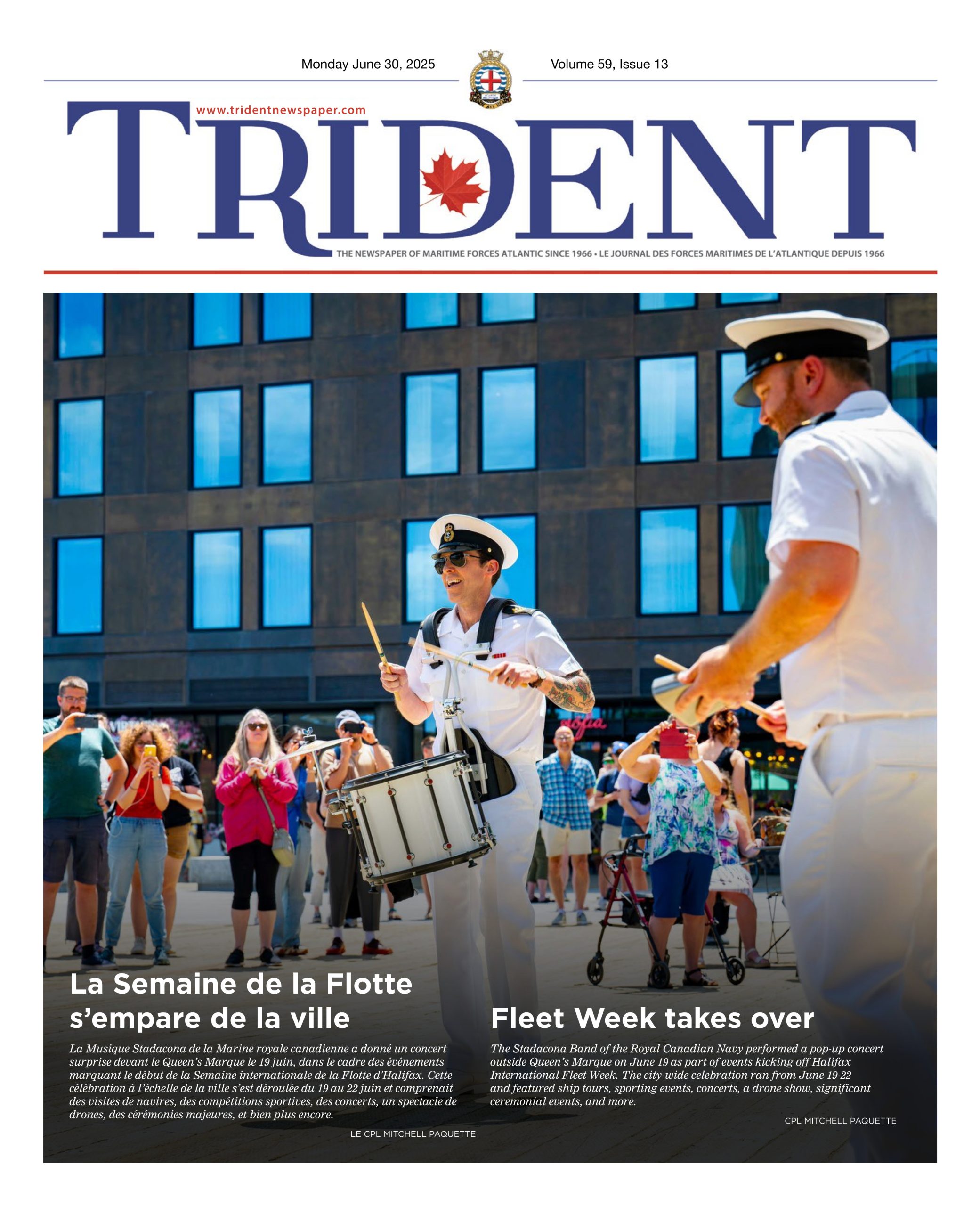
A “big deal” between significant milestones
By Michael McWhinnie,
NTG Public Affairs
The Canadian Surface Combatant (CSC) is one of the largest and most complex maritime defence projects of our generation. Not only will it deliver the RCN’s future fleet, it will also change the landscape on both coasts by recapitalizing training infrastructure necessary to support those vessels.
The CSC project achieved a significant milestone last November when Minister Blair announced that Canada is moving forward with a new training facility at Canadian Forces Base (CFB) Halifax, Canada’s largest military base. The EllisDon Corporation of Halifax has been awarded a $7.85 million contract to design the new Combatant Training and Integration Center – Atlantic (CTIC-A), which will house cutting-edge training systems to train Canadian sailors for the incoming fleet of CSC warships. The total estimated project cost of the facility is $188 million.
On Wednesday, February 21st, architects, engineers, and RCN managers gathered for a partnering session for the proposed facility during which critical processes for the management of communications, expectations, and relationships were discussed.
It was attended by two Commanding Officers of the organizations that will be the building’s primary occupants: Captain (Navy) Matthew Coates of Naval Training Group (NTG) and Captain (Navy) Blair Brown of the Canadian Forces Maritime Warfare Centre (CFMWC).
“The Carroll Building (S-17) is our principal instructional facility in Halifax and houses some of our most important trainers.It was built in 1941 and we struggle with its limitations; however, it would be unfair to suggest it was poorly designed. The architects of the day simply could not anticipate nearly a century of technological advancements and the demands that we would place on it,” stated Capt(N) Coates. “Flexibility and reconfigurability will be key design attributes to ensure CTIC(A) can support not only the technologies we know are coming, but those beyond our ability to predict.”

CTIC(A) will include a Secure Training Facility (STF) required by CSC for classified individual and collective training as well as associated simulators and trainers. It will allow for co-location of functionally connected organizations including CFMWC, a Data Management Centre and an Engineering Development Lab to facilitate and enhance collaboration.
“The Stubbs Building (S32), built in the 1950s, has served us equally well, first as the Maritime Warfare School, and now as the CFMWC. But the building has been showing its age for a while” added Capt(N) Brown.“We’re looking forward to the move to CTIC(A) which will co-locate the folks from CFMWC who develop the tactics to prevail on operations at sea, with those from NTG who teach them to our sailors and officers.”
Capt(N) Coates stressed the importance of the task before them. “Operational excellence at sea is built on a foundation of quality training ashore,” he stated. “First-rate training, in turn, relies heavily on access to suitable infrastructure. In a very appreciable way, the building you design will directly support Canadian maritime capability generation for decades to come.”
Expounding on the example of S-17 as a training facility, Capt(N) Coates reflected on the lifespan of buildings versus ships. He noted the multiple generations and classes of warships from cruisers, corvettes and aircraft carriers to St Laurent Class destroyer escorts and Iroquois Class destroyers that had come and gone during that timespan.
“Simply expressed, CTIC(A) is a big deal! Its completion will signal the imminent arrival of the first Canadian Surface Combatant.Concurrently, it represents a vital investment in the naval training system that will enable our officers and sailors to acquire the knowledge, skills, and attributes to perform their duties safely, professionally and with confidence for years to come,” concluded Capt(N) Coates.
The main contract for this facility was awarded in November 2023. The design phase will occur throughout 2024. Construction is tentatively scheduled to begin in 2025/2026 and finish in 2030.





